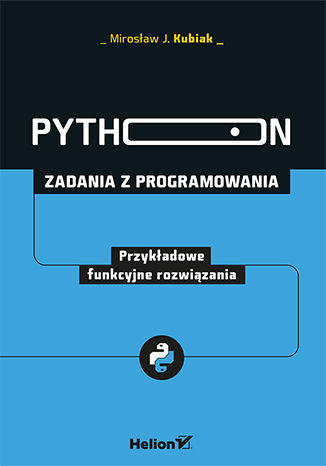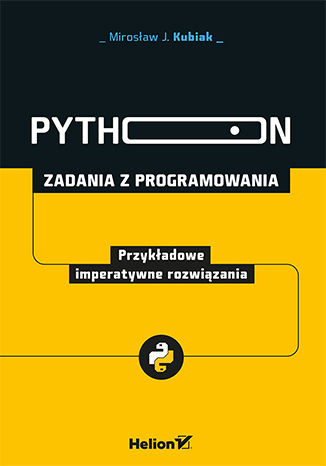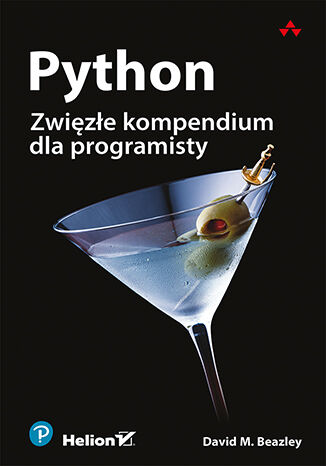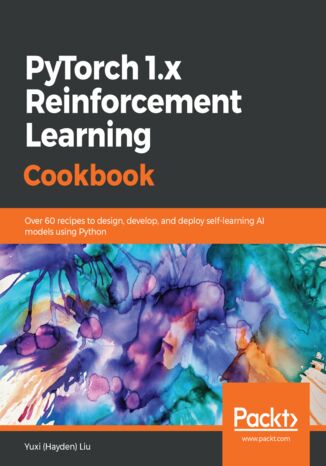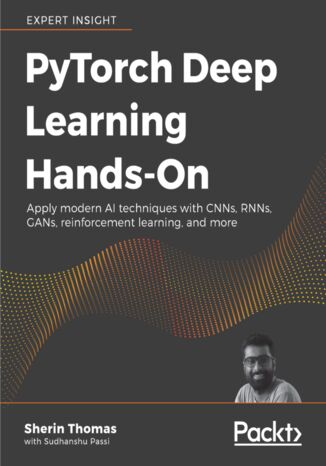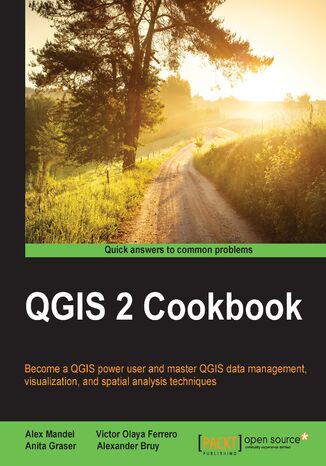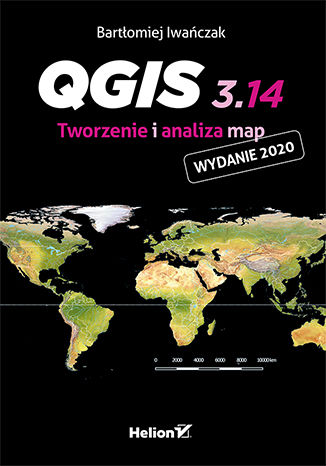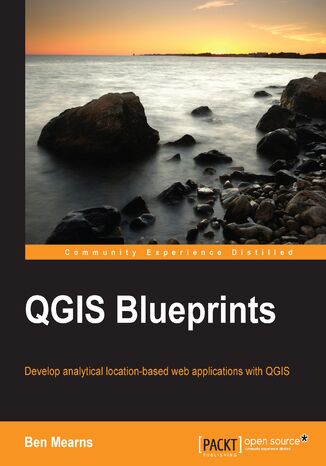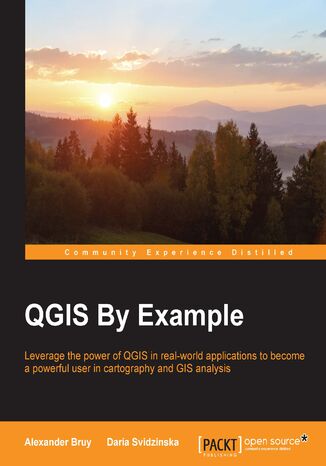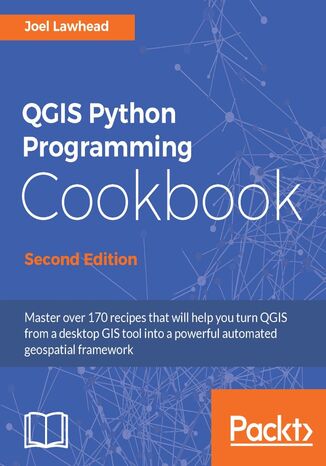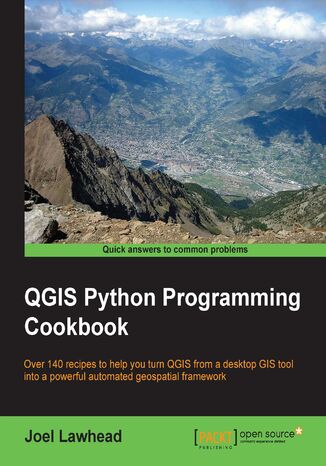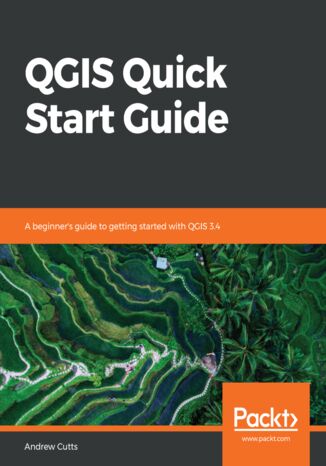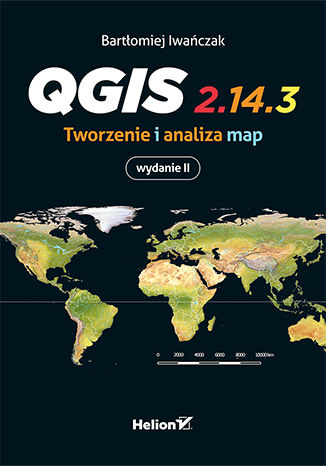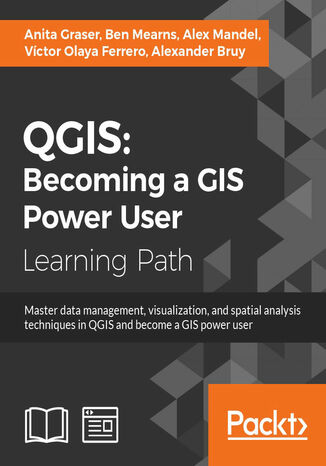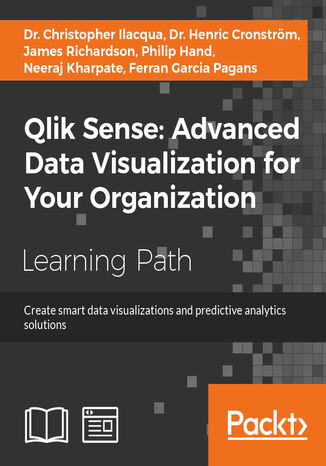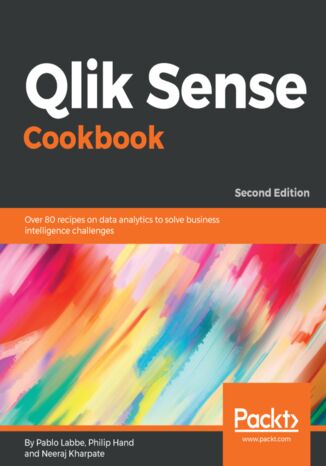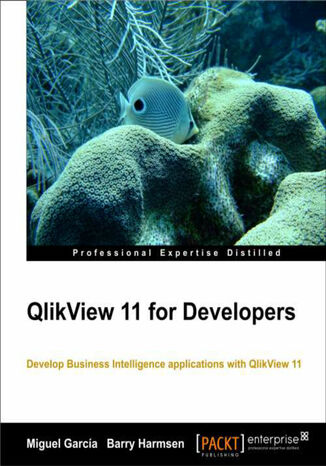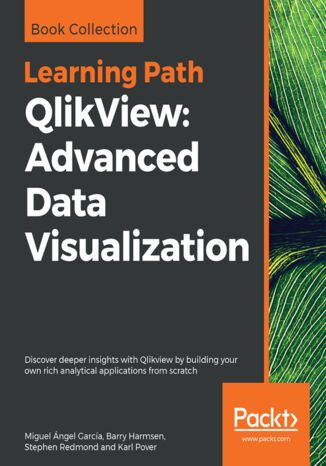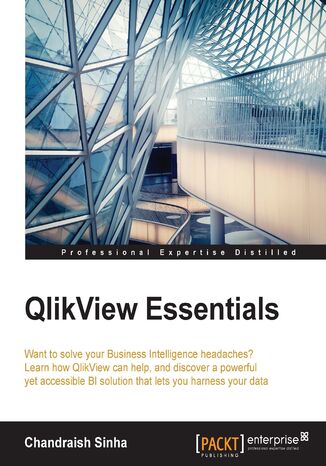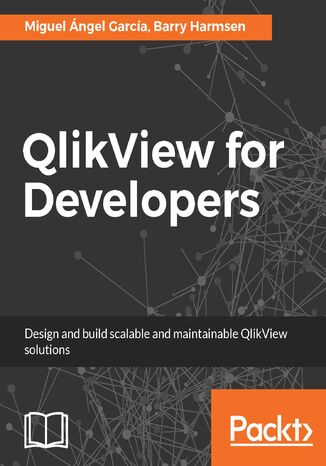Kategorie
Ebooki
-
Biznes i ekonomia
- Bitcoin
- Bizneswoman
- Coaching
- Controlling
- E-biznes
- Ekonomia
- Finanse
- Giełda i inwestycje
- Kompetencje osobiste
- Komputer w biurze
- Komunikacja i negocjacje
- Mała firma
- Marketing
- Motywacja
- Multimedialne szkolenia
- Nieruchomości
- Perswazja i NLP
- Podatki
- Polityka społeczna
- Poradniki
- Prezentacje
- Przywództwo
- Public Relation
- Raporty, analizy
- Sekret
- Social Media
- Sprzedaż
- Start-up
- Twoja kariera
- Zarządzanie
- Zarządzanie projektami
- Zasoby ludzkie (HR)
-
Dla dzieci
-
Dla młodzieży
-
Edukacja
-
Encyklopedie, słowniki
-
E-prasa
- Architektura i wnętrza
- BHP
- Biznes i Ekonomia
- Dom i ogród
- E-Biznes
- Ekonomia i finanse
- Ezoteryka
- Finanse
- Finanse osobiste
- Firma
- Fotografia
- Informatyka
- Kadry i płace
- Kobieca
- Komputery, Excel
- Księgowość
- Kultura i literatura
- Naukowe i akademickie
- Ochrona środowiska
- Opiniotwórcze
- Oświata
- Podatki
- Podróże
- Psychologia
- Religia
- Rolnictwo
- Rynek książki i prasy
- Transport i Spedycja
- Zdrowie i uroda
-
Historia
-
Informatyka
- Aplikacje biurowe
- Bazy danych
- Bioinformatyka
- Biznes IT
- CAD/CAM
- Digital Lifestyle
- DTP
- Elektronika
- Fotografia cyfrowa
- Grafika komputerowa
- Gry
- Hacking
- Hardware
- IT w ekonomii
- Pakiety naukowe
- Podręczniki szkolne
- Podstawy komputera
- Programowanie
- Programowanie mobilne
- Serwery internetowe
- Sieci komputerowe
- Start-up
- Systemy operacyjne
- Sztuczna inteligencja
- Technologia dla dzieci
- Webmasterstwo
-
Inne
-
Języki obce
-
Kultura i sztuka
-
Lektury szkolne
-
Literatura
- Antologie
- Ballada
- Biografie i autobiografie
- Dla dorosłych
- Dramat
- Dzienniki, pamiętniki, listy
- Epos, epopeja
- Esej
- Fantastyka i science-fiction
- Felietony
- Fikcja
- Humor, satyra
- Inne
- Klasyczna
- Kryminał
- Literatura faktu
- Literatura piękna
- Mity i legendy
- Nobliści
- Nowele
- Obyczajowa
- Okultyzm i magia
- Opowiadania
- Pamiętniki
- Podróże
- Poemat
- Poezja
- Polityka
- Popularnonaukowa
- Powieść
- Powieść historyczna
- Proza
- Przygodowa
- Publicystyka
- Reportaż
- Romans i literatura obyczajowa
- Sensacja
- Thriller, Horror
- Wywiady i wspomnienia
-
Nauki przyrodnicze
-
Nauki społeczne
-
Podręczniki szkolne
-
Popularnonaukowe i akademickie
- Archeologia
- Bibliotekoznawstwo
- Filmoznawstwo
- Filologia
- Filologia polska
- Filozofia
- Finanse i bankowość
- Geografia
- Gospodarka
- Handel. Gospodarka światowa
- Historia i archeologia
- Historia sztuki i architektury
- Kulturoznawstwo
- Lingwistyka
- Literaturoznawstwo
- Logistyka
- Matematyka
- Medycyna
- Nauki humanistyczne
- Pedagogika
- Pomoce naukowe
- Popularnonaukowa
- Pozostałe
- Psychologia
- Socjologia
- Teatrologia
- Teologia
- Teorie i nauki ekonomiczne
- Transport i spedycja
- Wychowanie fizyczne
- Zarządzanie i marketing
-
Poradniki
-
Poradniki do gier
-
Poradniki zawodowe i specjalistyczne
-
Prawo
- BHP
- Historia
- Kodeks drogowy. Prawo jazdy
- Nauki prawne
- Ochrona zdrowia
- Ogólne, kompendium wiedzy
- Podręczniki akademickie
- Pozostałe
- Prawo budowlane i lokalowe
- Prawo cywilne
- Prawo finansowe
- Prawo gospodarcze
- Prawo gospodarcze i handlowe
- Prawo karne
- Prawo karne. Przestępstwa karne. Kryminologia
- Prawo międzynarodowe
- Prawo międzynarodowe i zagraniczne
- Prawo ochrony zdrowia
- Prawo oświatowe
- Prawo podatkowe
- Prawo pracy i ubezpieczeń społecznych
- Prawo publiczne, konstytucyjne i administracyjne
- Prawo rodzinne i opiekuńcze
- Prawo rolne
- Prawo socjalne, prawo pracy
- Prawo Unii Europejskiej
- Przemysł
- Rolne i ochrona środowiska
- Słowniki i encyklopedie
- Zamówienia publiczne
- Zarządzanie
-
Przewodniki i podróże
- Afryka
- Albumy
- Ameryka Południowa
- Ameryka Środkowa i Północna
- Australia, Nowa Zelandia, Oceania
- Austria
- Azja
- Bałkany
- Bliski Wschód
- Bułgaria
- Chiny
- Chorwacja
- Czechy
- Dania
- Egipt
- Estonia
- Europa
- Francja
- Góry
- Grecja
- Hiszpania
- Holandia
- Islandia
- Litwa
- Łotwa
- Mapy, Plany miast, Atlasy
- Miniprzewodniki
- Niemcy
- Norwegia
- Podróże aktywne
- Polska
- Portugalia
- Pozostałe
- Przewodniki po hotelach i restauracjach
- Rosja
- Rumunia
- Słowacja
- Słowenia
- Szwajcaria
- Szwecja
- Świat
- Turcja
- Ukraina
- Węgry
- Wielka Brytania
- Włochy
-
Psychologia
- Filozofie życiowe
- Kompetencje psychospołeczne
- Komunikacja międzyludzka
- Mindfulness
- Ogólne
- Perswazja i NLP
- Psychologia akademicka
- Psychologia duszy i umysłu
- Psychologia pracy
- Relacje i związki
- Rodzicielstwo i psychologia dziecka
- Rozwiązywanie problemów
- Rozwój intelektualny
- Sekret
- Seksualność
- Uwodzenie
- Wygląd i wizerunek
- Życiowe filozofie
-
Religia
-
Sport, fitness, diety
-
Technika i mechanika
Audiobooki
-
Biznes i ekonomia
- Bitcoin
- Bizneswoman
- Coaching
- Controlling
- E-biznes
- Ekonomia
- Finanse
- Giełda i inwestycje
- Kompetencje osobiste
- Komunikacja i negocjacje
- Mała firma
- Marketing
- Motywacja
- Nieruchomości
- Perswazja i NLP
- Podatki
- Polityka społeczna
- Poradniki
- Prezentacje
- Przywództwo
- Public Relation
- Sekret
- Social Media
- Sprzedaż
- Start-up
- Twoja kariera
- Zarządzanie
- Zarządzanie projektami
- Zasoby ludzkie (HR)
-
Dla dzieci
-
Dla młodzieży
-
Edukacja
-
Encyklopedie, słowniki
-
E-prasa
-
Historia
-
Informatyka
-
Inne
-
Języki obce
-
Kultura i sztuka
-
Lektury szkolne
-
Literatura
- Antologie
- Ballada
- Biografie i autobiografie
- Dla dorosłych
- Dramat
- Dzienniki, pamiętniki, listy
- Epos, epopeja
- Esej
- Fantastyka i science-fiction
- Felietony
- Fikcja
- Humor, satyra
- Inne
- Klasyczna
- Kryminał
- Literatura faktu
- Literatura piękna
- Mity i legendy
- Nobliści
- Nowele
- Obyczajowa
- Okultyzm i magia
- Opowiadania
- Pamiętniki
- Podróże
- Poezja
- Polityka
- Popularnonaukowa
- Powieść
- Powieść historyczna
- Proza
- Przygodowa
- Publicystyka
- Reportaż
- Romans i literatura obyczajowa
- Sensacja
- Thriller, Horror
- Wywiady i wspomnienia
-
Nauki przyrodnicze
-
Nauki społeczne
-
Popularnonaukowe i akademickie
-
Poradniki
-
Poradniki zawodowe i specjalistyczne
-
Prawo
-
Przewodniki i podróże
-
Psychologia
- Filozofie życiowe
- Komunikacja międzyludzka
- Mindfulness
- Ogólne
- Perswazja i NLP
- Psychologia akademicka
- Psychologia duszy i umysłu
- Psychologia pracy
- Relacje i związki
- Rodzicielstwo i psychologia dziecka
- Rozwiązywanie problemów
- Rozwój intelektualny
- Sekret
- Seksualność
- Uwodzenie
- Wygląd i wizerunek
- Życiowe filozofie
-
Religia
-
Sport, fitness, diety
-
Technika i mechanika
Kursy video
-
Bazy danych
-
Big Data
-
Biznes, ekonomia i marketing
-
Cyberbezpieczeństwo
-
Data Science
-
DevOps
-
Dla dzieci
-
Elektronika
-
Grafika/Wideo/CAX
-
Gry
-
Microsoft Office
-
Narzędzia programistyczne
-
Programowanie
-
Rozwój osobisty
-
Sieci komputerowe
-
Systemy operacyjne
-
Testowanie oprogramowania
-
Urządzenia mobilne
-
UX/UI
-
Web development
-
Zarządzanie
Podcasty
Python. Zadania z programowania. Przykładowe funkcyjne rozwiązania
Programuj funkcyjnie w Pythonie! Poznaj funkcyjny paradygmat programowania Naucz się wykorzystywać go w języku Python Rozwiązuj praktyczne problemy programistyczne Python to obecnie jeden z najpopularniejszych języków programowania, a jego znajomość zapewnia zatrudnienie w największych firmach i przy najciekawszych projektach w branży informatycznej. Szerokie możliwości, duża elastyczność i wszechstronność, przejrzystość i zwięzłość składni, czytelność i klarowność kodu, rozbudowany pakiet bibliotek standardowych, niemal nieograniczone zastosowanie w różnych dziedzinach nauki i biznesu - wszystko to sprawia, że język ten z pewnością utrzyma swoją pozycję, a programujące w nim osoby jeszcze długo będą należały do najbardziej pożądanych specjalistów na rynku IT. Jedną z niewątpliwych zalet Pythona jest to, że wspiera różne paradygmaty programowania, w tym wydajne programowanie funkcyjne. Jeśli chcesz poszerzyć swoją wiedzę na temat języka i dowiedzieć się, jak wykorzystać jego możliwości w tym podejściu, sięgnij po książkę Python. Zadania z programowania. Przykładowe funkcyjne rozwiązania. Dzięki zamieszczonym w niej zadaniom o różnym poziomie trudności oraz ich rozwiązaniom poznasz podstawy programowania funkcyjnego w Pythonie i nauczysz się pisać zwięzłe i eleganckie programy, które działają szybko i zużywają mniej zasobów, praktyczne wskazówki zaś pomogą Ci zrozumieć bardziej zawiłe zagadnienia. Wprowadzenie do programowania funkcyjnego w Pythonie Sekwencyjne struktury danych i operacje na plikach Wykorzystanie krotek i ciągów tekstowych Zastosowanie słowników i zbiorów Wybrane moduły programowania funkcyjnego Funkcje rekurencyjne i rekurencja ogonowa Programowanie synchroniczne i asynchroniczne Podstawy programowania współbieżnego i równoległego Przekonaj się, jak prosty może być język Python! Jeśli chcesz poznać podstawy języka Python oraz opanować paradygmaty imperatywny i obiektowy, przed lekturą tej książki sięgnij po inną publikację tego autora: Python. Zadania z programowania. Przykładowe imperatywne rozwiązania.
Python. Zadania z programowania. Przykładowe imperatywne rozwiązania
Programuj imperatywnie w Pythonie! Poznaj język Python od strony praktycznej Naucz się czytać i analizować kod Pythona Rozwiązuj problemy programistyczne Python to obecnie jeden z najpopularniejszych języków programowania, a jego znajomość zapewnia zatrudnienie w największych firmach i przy najciekawszych projektach w branży informatycznej. Szerokie możliwości, duża elastyczność i wszechstronność, przejrzystość i zwięzłość składni, czytelność i klarowność kodu, rozbudowany pakiet bibliotek standardowych, niemal nieograniczone zastosowanie w różnych dziedzinach nauki i biznesu - wszystko to sprawia, że język ten z pewnością utrzyma swoją pozycję, a programujące w nim osoby jeszcze długo będą należały do najbardziej pożądanych specjalistów na rynku IT. Jedną z niewątpliwych zalet Pythona jest to, że wspiera różne paradygmaty programowania, w tym programowanie imperatywne. Jeśli chcesz poznać język od podstaw i dowiedzieć się, jak wykorzystać jego możliwości w podejściu imperatywnym i obiektowym, sięgnij po książkę Python. Zadania z programowania. Przykładowe imperatywne rozwiązania. Dzięki zamieszczonym w niej zadaniom o różnym poziomie trudności oraz ich rozwiązaniom szybko i gruntownie nauczysz się programować w Pythonie i czytać kod napisany w tym języku, a praktyczne wskazówki pomogą Ci zrozumieć bardziej zawiłe zagadnienia. Podstawowe operacje wejścia-wyjścia w języku Python Konstrukcje warunkowe, operatory logiczne i pętle Definiowanie i wywoływanie funkcji oraz rekurencja Programowanie zorientowane obiektowo w Pythonie Odczytywanie i zapisywanie plików tekstowych i binarnych Obsługa wyjątków, dekoratory i menedżery kontekstu Iteratory, generatory, funkcje wyższego rzędu Przekonaj się, jak prosty może być język Python! Jeśli chcesz poszerzyć swoją wiedzę i interesuje Cię programowanie funkcyjne w języku Python, sięgnij również po inną książkę tego autora: Python. Zadania z programowania. Przykładowe funkcyjne rozwiązania.
Python. Zbiór zadań z rozwiązaniami
Python w praktyce zadań i rozwiązań Język programowania ogólnego przeznaczenia Python należy obecnie do najpopularniejszych na świecie. Skąd się bierze jego fenomen? Niewątpliwie kluczowe znaczenie ma tu bardzo czytelna składnia, mocno zbliżona do składni języka naturalnego. Czyni to Pythona dość łatwym do opanowania, także dla początkujących. Osoby bardziej doświadczone doceniają go za wszechstronność. Pythona można używać w różnych dziedzinach, takich jak analiza danych, sztuczna inteligencja, tworzenie stron internetowych, automatyka i automatyzacja, pisanie aplikacji mobilnych i wiele innych. Dodajmy do tego rozbudowany pakiet bibliotek standardowych i oto mamy (niemal) idealny język programowania. A jak się go nauczyć? Najlepiej w praktyce. Rozwiązując zadania i weryfikując własne rezultaty z podanymi w tym zbiorze rozwiązaniami. Autor przygotował ten zeszyt ćwiczeń tak, by zawrzeć w nim wyzwania nieco prostsze, przeznaczone dla mniej zaawansowanych adeptów Pythona, jak i bardziej złożone, wymagające lepszej znajomości zagadnienia. Każde zadanie ma wyraźnie określony stopień trudności, a także jest opatrzone tagami pozwalającymi się zorientować w wymaganiach omawianej tematyki. Sugerują one obszar wiedzy, którą można się posłużyć podczas rozwiązywania. Ta książka pozwoli Ci zacząć przygodę z Pythonem, którego znajomość już dziś możemy określić kompetencją przyszłości, i to pożądaną nie tylko w branży IT.
Python. Zwięzłe kompendium dla programisty
Przez ostatnie trzydzieści lat Python intensywnie się rozwijał. Stał się dojrzałym językiem programowania, nadającym się do tworzenia zarówno niewielkich, wyspecjalizowanych narzędzi, jak i złożonych systemów. Zakres jego możliwości poszerzają liczne biblioteki i narzędzia. Ta wszechstronność i bogactwo stanowią jednak duże wyzwanie dla programistów, którzy chcieliby nie tyle poznać poszczególne funkcje tego języka, ile dogłębnie go zrozumieć i nauczyć się "pythonicznego" sposobu myślenia. Ta książka jest zwięzłym, skupionym na praktyce przewodnikiem po Pythonie w wersji 3.6 i nowszych. Dzięki niej skoncentrujesz się na rdzeniu języka i podstawowych zagadnieniach, które musisz doskonale opanować, jeśli chcesz pisać w nim dobry kod. Dowiesz się zatem, jak działa Python i jakich zasad należy przestrzegać podczas tworzenia programów, które później będą łatwe do przetestowania, debugowania i utrzymania. Dobrze zrozumiesz kluczowe kwestie, takie jak abstrakcja danych, kontrola przepływu programu, struktura programu, funkcje, obiekty i moduły. Poszczególne treści zostały zilustrowane przejrzystymi fragmentami kodu, pozwalającymi nie tylko łatwiej przyswoić opisane zagadnienia, ale i poczuć niezwykły urok Pythona - tę magię, która sprawia, że programowanie w tym języku daje mnóstwo przyjemności i satysfakcji! W książce: czym jest rdzeń Pythona praca z danymi i ich analiza zasady tworzenia przejrzystego i niezawodnego kodu funkcje i idiomy w programowaniu funkcjonalnym generatory, klasy, moduły, pakiety prawidłowa obsługa I/O i korzyści ze stosowania słowników Python? Zacznij od tego, co w nim najważniejsze!
Co wspólnego ma Powstanie Warszawskie z Wyrocznią Delficką? Co w Prudentialu, słynnym drapaczu chmur, robią renesansowa dama czy admirał floty międzygalaktycznej? Jarosław Księżyk, posługując się nieco już zapomnianą formułą fantastyki socjologicznej, stworzył brawurową, niesamowitą i wciągającą story osadzoną w realiach walczącej Warszawy. Opowiadając o indywidualnych losach ludzi z różnych wieków, przedstawia uniwersalną historię wszechobecnego zła i ludzkich namiętności, które często prowadzą do tragedii. Jedyna w swoim rodzaju, wyborna lektura." Robert Ostaszewski
Reinforcement learning (RL) is a branch of machine learning that has gained popularity in recent times. It allows you to train AI models that learn from their own actions and optimize their behavior. PyTorch has also emerged as the preferred tool for training RL models because of its efficiency and ease of use.With this book, you'll explore the important RL concepts and the implementation of algorithms in PyTorch 1.x. The recipes in the book, along with real-world examples, will help you master various RL techniques, such as dynamic programming, Monte Carlo simulations, temporal difference, and Q-learning. You'll also gain insights into industry-specific applications of these techniques. Later chapters will guide you through solving problems such as the multi-armed bandit problem and the cartpole problem using the multi-armed bandit algorithm and function approximation. You'll also learn how to use Deep Q-Networks to complete Atari games, along with how to effectively implement policy gradients. Finally, you'll discover how RL techniques are applied to Blackjack, Gridworld environments, internet advertising, and the Flappy Bird game.By the end of this book, you'll have developed the skills you need to implement popular RL algorithms and use RL techniques to solve real-world problems.
Sherin Thomas, Sudhanshu Passi
PyTorch Deep Learning Hands-On is a book for engineers who want a fast-paced guide to doing deep learning work with PyTorch. It is not an academic textbook and does not try to teach deep learning principles. The book will help you most if you want to get your hands dirty and put PyTorch to work quickly.PyTorch Deep Learning Hands-On shows how to implement the major deep learning architectures in PyTorch. It covers neural networks, computer vision, CNNs, natural language processing (RNN), GANs, and reinforcement learning. You will also build deep learning workflows with the PyTorch framework, migrate models built in Python to highly efficient TorchScript, and deploy to production using the most sophisticated available tools.Each chapter focuses on a different area of deep learning. Chapters start with a refresher on how the model works, before sharing the code you need to implement it in PyTorch.This book is ideal if you want to rapidly add PyTorch to your deep learning toolset.
Víctor Olaya Ferrero, Alex Mandel, Víctor Olaya Ferrero, Anita Graser, ...
QGIS is a user-friendly, cross-platform desktop geographic information system used to make maps and analyze spatial data. QGIS allows users to understand, question, interpret, and visualize spatial data in many ways that reveal relationships, patterns, and trends in the form of maps. This book is a collection of simple to advanced techniques that are needed in everyday geospatial work, and shows how to accomplishthem with QGIS. You will begin by understanding the different types of data management techniques, as well as how data exploration works. You will then learn how to perform classic vector and raster analysis with QGIS, apart from creating time-based visualizations. Finally, you will learn how to create interactive and visually appealing maps with custom cartography. By the end of this book, you will have all the necessaryknowledge to handle spatial data management, exploration, and visualization tasks in QGIS.
QGIS 3.14. Tworzenie i analiza map
Książka "QGIS 3.14. Tworzenie i analiza map" Barłomieja Iwańczaka zdobyła wyróżnienie w kategorii podręczników w konkursie na Najlepszą Polską Książkę Informatyczną 2022r. organizowanym przez Polskie Towarzystwo Informatyczne. Świat w zasięgu Twojej mapy "Mam narysować mapę? Przecież ja nic nie pamiętam z geografii!" - znasz ten ból? Sama myśl o przedstawieniu jakichś danych przestrzennych, naniesieniu trasy na mapę albo wyborze na niej obiektów powoduje, że czujesz dreszcze? Czy jesteś informatykiem, dziennikarzem, psychologiem, handlowcem, czy logistykiem - te umiejętności mogą Ci się przydać. Jeżeli nie znasz tajników kartografii, dzięki tej książce odkryjesz je bezboleśnie. W dodatku będzie to całkiem przyjemne doświadczenie, bo w zasięgu jednego wskazania myszką czeka na Ciebie QGIS! Dla niewtajemniczonych: QGIS to otwarte, bezpłatne oprogramowanie pozwalające w intuicyjny sposób zarządzać istniejącymi zbiorami geograficznymi dostępnymi w internecie, tworzyć własne dane, wykonywać analizy przestrzenne i - przede wszystkim - publikować ciekawe mapy. Program jest niezwykle prosty w obsłudze, ma ogromną bibliotekę rozszerzeń do bardziej szczegółowych potrzeb, co więcej, występuje w polskiej wersji językowej i wspiera go także polskojęzyczna społeczność. Warto więc nauczyć się z niego korzystać, najlepiej z naszą sympatyczną przewodniczką Ulą, z którą między innymi: opanujesz zarówno podstawowe, jak i zaawansowane funkcje oprogramowania QGIS nauczysz się tworzyć w QGIS czytelne plany i mapy zapoznasz się z praktycznymi wskazówkami, jak poprawnie wykonać swoją pracę dowiesz się, jak przestrzennie przedstawiać i analizować dane z tabel zobaczysz, co jeszcze można zrobić z wykorzystaniem znajomości języków SQL, HTML i R będziesz się nieźle bawić przy odwzorowywaniu swojego świata w formie mapy w komputerze
QGIS Python Programming Cookbook. Automating geospatial development - Second Edition
QGIS is a desktop geographic information system that facilitates data viewing, editing, and analysis. Paired with the most efficient scripting language—Python, we can write effective scripts that extend the core functionality of QGIS. Based on version QGIS 2.18, this book will teach you how to write Python code that works with spatial data to automate geoprocessing tasks in QGIS. It will cover topics such as querying and editing vector data and using raster data. You will also learn to create, edit, and optimize a vector layer for faster queries, reproject a vector layer, reduce the number of vertices in a vector layer without losing critical data, and convert a raster to a vector. Following this, you will work through recipes that will help you compose static maps, create heavily customized maps, and add specialized labels and annotations. As well as this, we’ll also share a few tips and tricks based on different aspects of QGIS.
QGIS Quick Start Guide. A beginner's guide to getting started with QGIS 3.4
QGIS is a user friendly, open source geographic information system (GIS). The popularity of open source GIS and QGIS, in particular, has been growing rapidly over the last few years. This book is designed to help beginners learn about all the tools required to use QGIS 3.4.This book will provide you with clear, step-by-step instructions to help you apply your GIS knowledge to QGIS. You begin with an overview of QGIS 3.4 and its installation. You will learn how to load existing spatial data and create vector data from scratch. You will then be creating styles and labels for maps. The final two chapters demonstrate the Processing toolbox and include a brief investigation on how to extend QGIS. Throughout this book, we will be using the GeoPackage format, and we will also discuss how QGIS can support many different types of data.Finally, you will learn where to get help and how to become engaged with the GIS community.
Twórz mapy i wykorzystuj je do swoich celów! We współczesnych czasach znalezienie dowolnego punktu na mapie nie wymaga już od nas rozkładania wielkiej płachty i szukania w odpowiednim kwadracie. Powszechnie posługujemy się lokalizacją: korzystamy z map Google’a albo odczytujemy współrzędne z nawigacji satelitarnej w smartfonie. Często potrzebna jest nam jednak możliwość przeanalizowania i zaprezentowania informacji przestrzennych. Dzięki tej książce poznasz możliwości QGIS-a — darmowego, intuicyjnego programu do pracy z danymi przestrzennymi. Jeżeli jesteś urzędnikiem, logistykiem, informatykiem, marketingowcem, dziennikarzem albo badaczem, prędzej czy później zechcesz przedstawić wyniki swojej pracy w sposób wizualny, również na mapie. Dzięki tej książce zrobisz to bez większego trudu. Przygotowanie kartogramu czy utworzenie siatki dróg nie będzie już wymagało poszukiwania specjalisty — zrobisz to samodzielnie. To nie jest zwyczajny podręcznik. Podczas lektury będziesz z przyjemnością (i lekkim przymrużeniem oka) zdobywać nowe umiejętności. Towarzyszyć Ci będzie młoda dziewczyna, Ula. Czasem podsunie Ci użyteczną wskazówkę, innym razem podpowie, co warto zapamiętać. Dzięki atrakcyjnej formie graficznej i ponad 300 ilustracjom łatwo Ci będzie nauczyć się wykonywania kolejnych czynności, a analiza danych przestrzennych wkrótce nie będzie miała przed Tobą tajemnic. Do dzieła!
Ben Mearns, Alex Mandel, Alexander Bruy, Anita Graser, ...
The first module Learning QGIS, Third edition covers the installation and configuration of QGIS. You’ll become a master in data creation and editing, and creating great maps. By the end of this module, you’ll be able to extend QGIS with Python, getting in-depth with developing custom tools for the Processing Toolbox. The second module QGIS Blueprints gives you an overview of the application types and the technical aspects along with few examples from the digital humanities. After estimating unknown values using interpolation methods and demonstrating visualization and analytical techniques, the module ends by creating an editable and data-rich map for the discovery of community information. The third module QGIS 2 Cookbook covers data input and output with special instructions for trickier formats. Later, we dive into exploring data, data management, and preprocessing steps to cut your data to just the important areas. At the end of this module, you will dive into the methods for analyzing routes and networks, and learn how to take QGIS beyond the out-of-the-box features with plug-ins, customization, and add-on tools. This Learning Path combines some of the best that Packt has to offer in one complete, curated package. It includes content from the following Packt products: ? Learning QGIS, Third Edition by Anita Graser ? QGIS Blueprints by Ben Mearns ? QGIS 2 Cookbook by Alex Mandel, Víctor Olaya Ferrero, Anita Graser, Alexander Bruy
Henric Cronström, Ferran Garcia Pagans, Neeraj Kharpate, James Richardson, ...
Qlik Sense is powerful and creative visual analytics software that allows users to discover data, explore it, and dig out meaningful insights in order to make a profit and make decisions for your business. This course begins by introducing you to the features and functions of the most modern edition of Qlik Sense so you get to grips with the application. The course will teach you how to administer the data architecture in Qlik Sense, enabling you to customize your own Qlik Sense application for your business intelligence needs. It also contains numerous recipes to help you overcome challenging situations while creating fully featured desktop applications in Qlik Sense. It explains how to combine Rattle and Qlik Sense Desktop to apply predictive analytics to your data to develop real-world interactive data applications. The course includes premium content from three of our most popular books:[*] Learning Qlik Sense: The Official Guide Second Edition[*] Qlik Sense Cookbook[*] Predictive Analytics using Rattle and Qlik SenseOn completion of this course, you will be self-sufficient in improving your data analysis and will know how to apply predictive analytics to your datasets. Through this course, you will be able to create predictive models and data applications, allowing you to explore your data insights much deeper.
Pablo Labbe, Philip Hand, Neeraj Kharpate
Qlik Sense allows you to explore simple and complex data to reveal hidden insight and data relationships that help you make quality decisions for overall productivity. An expert Qlik Sense user can use its features for business intelligence in an enterprise environment effectively. Qlik Sense Cookbook is an excellent guide for all aspiring Qlik Sense developers and will empower you to create featured desktop applications to obtain daily insights at work.This book takes you through the basics and advanced functions of Qlik Sense February 2018 release. You’ll start with a quick refresher on obtaining data from data files and databases, and move on to some more refined features including visualization, and scripting, as well as managing apps and user interfaces. You will then understand how to work with advanced functions like set analysis and set expressions. As you make your way through this book, you will uncover newly added features in Qlik Sense such as new visualizations, label expressions and colors for dimension and measures.By the end of this book, you will have explored various visualization extensions to create your own interactive dashboard with the required tips and tricks. This will help you overcome challenging situations while developing your applications in Qlik Sense.
Miguel Garc?É?íÂ!!=a, Barry Harmsen, Miguel Angel Garcia
Business Intelligence technologies are a must-have in every business to make informed decisions and keep up-to speed with the ever-evolving markets. QlikView's disruptive technology makes it a key player and leader in the industry; with its flexibility and powerful analytics environment, building QlikView apps can be mastered by both, business users as well as developers.This book will help you learn QlikView Development from a basic to a practitioner level using a step-by-step approach in a practical environment, and apply proven best practices on each topic.Throughout the book, we will build a QlikView app based on real data about Airline Operations that will help HighCloud Airlines make informed business decisions and analysis-guided strategies. HighCloud Airlines executives are evaluating if entering the US market is a good strategy and, if so, which line of business should they focus their investments on; they need QlikView to make the best decision.The application will be evolving chapter by chapter, along with your skills, going from a simple proof of concept to creating a Data Model, adding a custom style, building a Dashboard and handling and manipulating the source data via script. We will meet the HighCloud Airlines requirement by using many different data visualization objects and time-saving techniques.The whole application uses real data taken from the Bureau of Transportations statistics of the US and encompasses the operations of Airlines both domestic and international. With three years worth of data, you will help HighCloud Airlines discover where people travel the most, which are the Carriers with the most market share, what is the average load factor per airline, which aircraft is the most used to perform flights, which are the busiest airports, and a whole universe of new insights.
Miguel Angel Garcia, Barry Harmsen, Stephen Redmond, Karl Pover
QlikView is one of the most flexible and powerful business intelligence platforms around, and if you want to transform data into insights, it is one of the best options you have at hand. Use this Learning Path, to explore the many features of QlikView to realize the potential of your data and present it as impactful and engaging visualizations.Each chapter in this Learning Path starts with an understanding of a business requirement and its associated data model and then helps you create insightful analysis and data visualizations around it. You will look at problems that you might encounter while visualizing complex data insights using QlikView, and learn how to troubleshoot these and other not-so-common errors. This Learning Path contains real-world examples from a variety of business domains, such as sales, finance, marketing, and human resources.With all the knowledge that you gain from this Learning Path, you will have all the experience you need to implement your next QlikView project like a pro.This Learning Path includes content from the following Packt products:• QlikView for Developers by Miguel Ángel García, Barry Harmsen • Mastering QlikView by Stephen Redmond • Mastering QlikView Data Visualization by Karl Pover
This guide demonstrates just how easy it is to get started with QlikView and create your own BI application. Featuring an introduction to its core features before exploring how to load data and model it, you’ll soon become more confident that you can take full advantage of QlikView’s capabilities.. You will also learn how to use QVD files with QlikView – and how they offer a simpler way of handling data.After digging deeper into data handling, as you learn how to use mapping tables and create a master calendar, you’ll then find out how to get the most from QlikView’s visualization features – vital if you are to use your data insights effectively. From accessible and user friendly dashboards to strategies and best practices for subjecting data to further analysis, you can be confident that you’ll be prepared to get the most out of your data with QlikView.With details on how to finally secure your application and deploy it for a successful integration in your organization, QlikView Essentials underlines exactly why QlikView is becoming more and more popular for businesses that understand the value of data.
QlikView has been around since 1993, but has only really taken off in recent years as a leader in the in-memory BI space and, more recently, in the data discovery area. QlikView features the ability to consolidate relevant data from multiple sources into a single application, as well as an associative data model to allow you to explore the data to a way your brain works, state-of-the-art visualizations, dashboard, analysis and reports, and mobile data access.QlikView for Developers Cookbook builds on your initial training and experiences with QlikView to help you become a better developer. This book features plenty of hands-on examples of many challenging functions.Assuming a basic understanding of QlikView development, this book provides a range of step-by-step exercises to teach you different subjects to help build your QlikView developer expertise.From advanced charting and layout to set analysis; from advanced aggregations through to scripting, performance, and security, this book will cover all the areas that you need to know about.The recipes in this book will give you a lot of the information that you need to become an excellent QlikView developer.
QlikView for Developers. Design and build scalable and maintainable BI solutions
Miguel Angel Garcia, Barry Harmsen
QlikView is one of the most flexible and powerful Business Intelligence platforms around. If you want to build data into your organization, build it around QlikView. Don't get caught in the gap between data and knowledge – find out how QlikView can help you unlock insights and data potential with ease. Whether you're new to QlikView or want to get up to speed with the features and functionality of QlikView, this book starts at a basic level and delves more deeply to demonstrate how to make QlikView work for you, and make it meet the needs of your organization. Using a real-world use-case to highlight the extensive impact of effective business analytics, this book might well be your silver bullet for success.A superb hands-on guide to get you started by exploring the fundamentals of QlikView before learning how to successfully implement it, technically and strategically. You'll learn valuable tips, tricks, and insightful information on loading different types of data into QlikView, and how to model it effectively.You will also learn how to write useful scripts for QlikView to handle potentially complex data transformations in a way that is simple and elegant. From ensuring consistency and clarity in your data models, to techniques for managing expressions using variables, this book makes sure that your QlikView projects are organized in a way that's most productive for you and key stakeholders.
B Diane Blackwood, Diane B Blackwood
This book is an effective step-by-step tutoring guide for financial analysis using Qlikview.It begins by teaching you the crucial concepts of Qlikview Finance to help you develop an effective understanding of financial data analysis and finance. The book then goes on to cover real-world, practical examples on the use of Qlikview for financial planning and analysis, expense management, risk management, and more. Moving on, topics such as Asset Management QlikView Dashboard and Retail Sales Analysis are covered in a strategic way. We then shift the focus to deal with the concepts of Inventory, Supply Chain, and Plant Coverage Dashboards. The book then reaches its conclusion by dealing with ways to share your QlikView insights. By the end of this book, you will have a good understanding of how to use Qlikview for numerous applications in finance.

